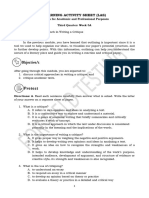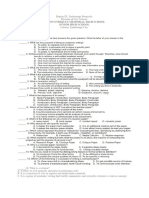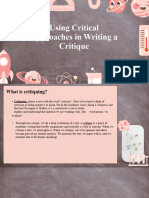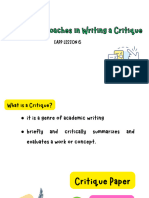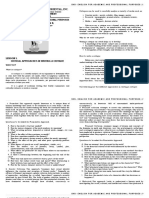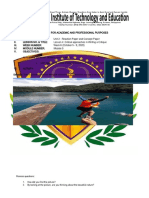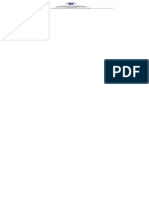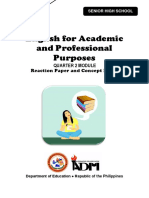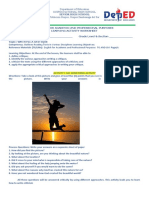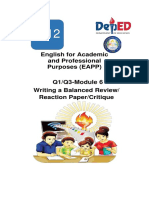0% found this document useful (0 votes)
7 views3 pagesActivity Critique
The document discusses critiques, including what they are, their importance, and how to write them. A critique involves summarizing and evaluating a work or concept. Critiques help develop writing skills and recognize strengths and weaknesses. They are used to understand essays in a critical manner and evaluate theories. The document also discusses different approaches to critiques, such as formalism and feminism.
Uploaded by
Ma. Cecilia GarciaCopyright
© © All Rights Reserved
We take content rights seriously. If you suspect this is your content, claim it here.
Available Formats
Download as DOCX, PDF, TXT or read online on Scribd
0% found this document useful (0 votes)
7 views3 pagesActivity Critique
The document discusses critiques, including what they are, their importance, and how to write them. A critique involves summarizing and evaluating a work or concept. Critiques help develop writing skills and recognize strengths and weaknesses. They are used to understand essays in a critical manner and evaluate theories. The document also discusses different approaches to critiques, such as formalism and feminism.
Uploaded by
Ma. Cecilia GarciaCopyright
© © All Rights Reserved
We take content rights seriously. If you suspect this is your content, claim it here.
Available Formats
Download as DOCX, PDF, TXT or read online on Scribd
/ 3
